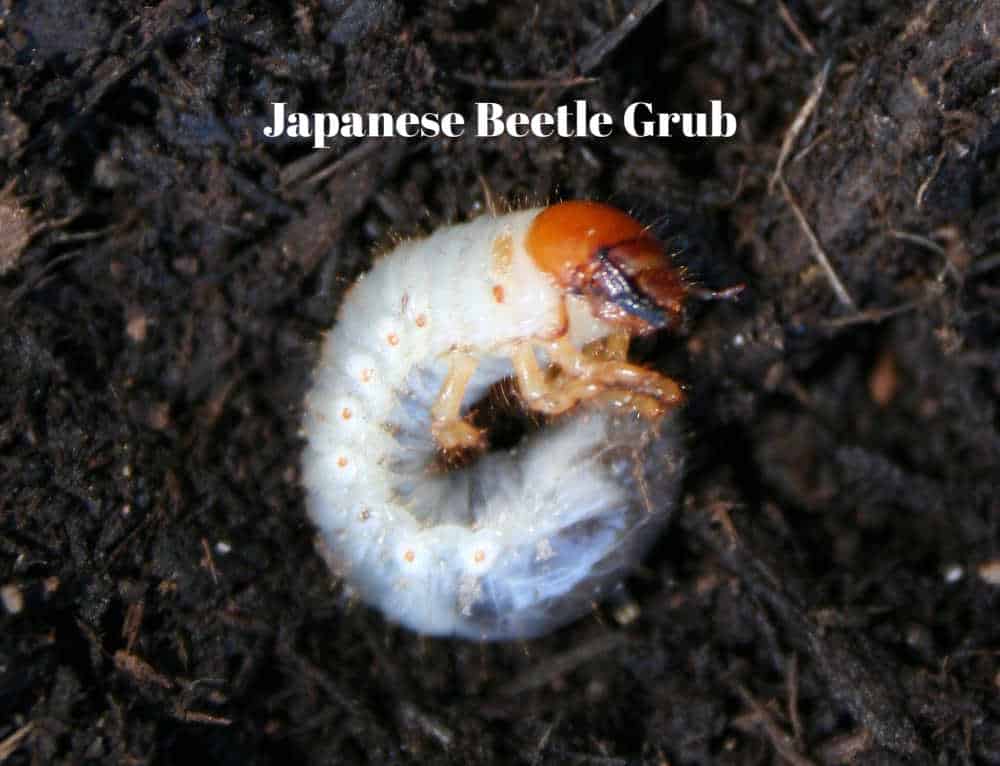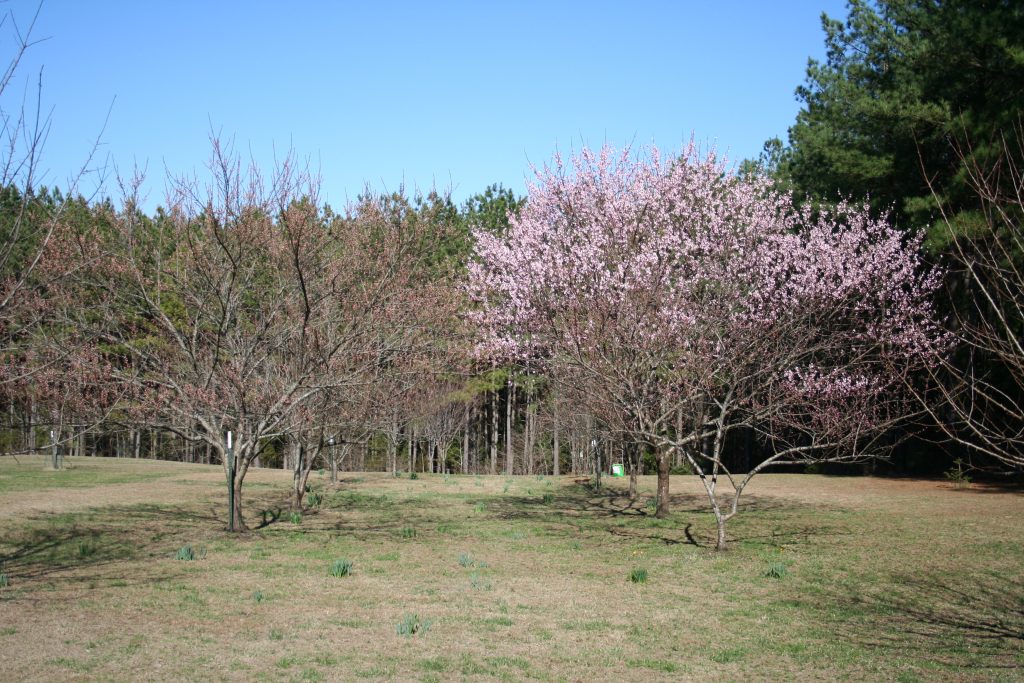What do Japanese beetle grubs look like? And how do you control them?
Here’s everything you ever wanted to know (but were afraid to ask) about the plague of gardeners everywhere: Japanese beetles.
Japanese Beetle Grubs
Japanese beetle grubs emerge now from their winter sojourn under the lawn. They are part of the insect’s lifecycle.
Grubs are 1/8 to one inch long, depending on when you spot them. They are white. Entymologists can distinguish between Japanese beetle grubs and other types of grubs based on the type of spines on their back and other features. For our sake, look for white grubs in soil or lawn; that their favorite hangout.
Mine like the mulch pile.

Japanese beetle grubs slowly make their way up from their winter quarters here in Virginia starting in February and March. The beetle larva, or grub, spends the fall gnawing its way through plant material about two to four inches under the soil surface. When the cold weather arrives, it descends to a depth of around eight inches to keep warm.
During the spring, as the sun’s rays warm the soil, the beetle makes its way upward. It eats primarily plant roots: lawns and turf grasses are common areas but it isn’t fussy. We are finding dozens of grubs in the mulch pile. We toss the grubs onto the lawn, which sound strange, but we also have flocks of crows that gather in the morning near the farm.
Crows absolutely love Japanese beetle grubs and tear holes in the fields and lawns seeking the tender morsels. We’re generous; they can have their share of them at this time of year as we spread the mulch and find them!
Japanese Beetles
Japanese beetles must be controlled at all stages of their lifecycle. Let’s take a look at each and what to do in the garden.
- Spring: If you see a grub, kill it. (Yes, squish it. I know it’s gross. It’s the only way). Organic treatments include nematodes and milky spore on grub-prone areas. Follow package directions.
- Early Summer – Summer: Adults fly long distances to seek mates and feed. You CAN hang traps to catch the adults. These traps use scent to lure beetles into a chute that ends in a bag. They can’t climb out of the bag or pouch. You’ll need to change the pouch and throw it out frequently. The hot weather can make it smell bad.
It is a myth that using Japanese beetle traps lures more beetles into your yard. It can lure them, but temporarily. You won’t have every love-sick beetle for miles around seeking your property.
To treat plants, I like to use a neem-based spray on my roses. It helps somewhat and also prevents black spot.
I don’t treat our apple trees. Most mature plants, like the apple trees, survive just fine with some Japanese beetle damage. The leaves get chewed up, but we still get apples, so it’s a fair deal.
- Fall: Fall is the time when the beetle eggs, which the adult lays in August, hatch into the grubs. Organic treatments include milky spore and nematodes.
A dry spell during peak egg-laying times (August) means fewer beetles. The grubs require moist organic material in order to survive. The drier it is, the fewer grubs survive. Of course, no one wants a drought. But nature does have a way of keeping its citizens in check.

On our farm, we do little to protect against Japanese beetles. We used to hang up traps near the roses, but I’ve long since given up on them. We have 17 acres, and Japanese beetles fly long distances, so no matter what we did, we always had them. I will spray my roses with neem organic spray, but we only have two large rose bushes, so it’s not an onerous task.
Good luck in your battle against these bugs. They are a pest, that’s for sure, and one that’s difficult to completely eradicate.




